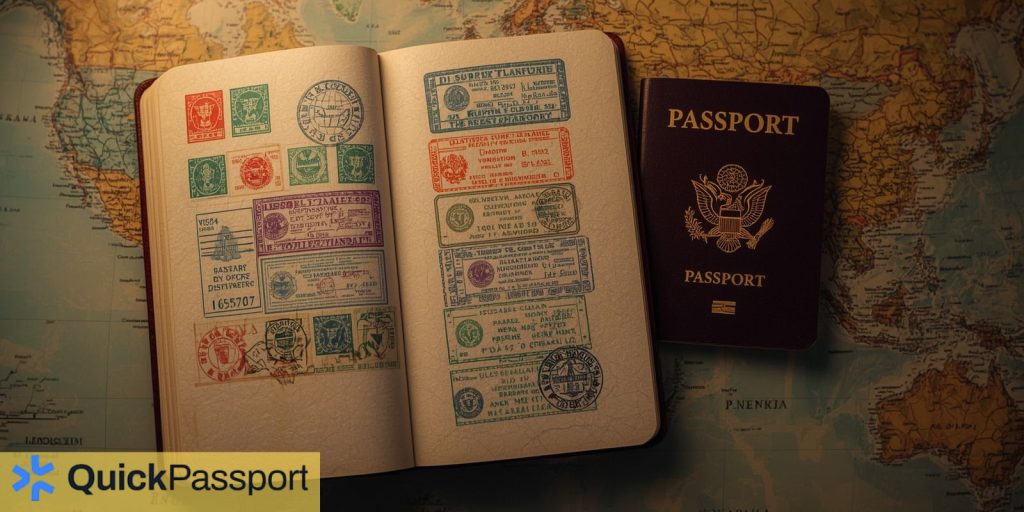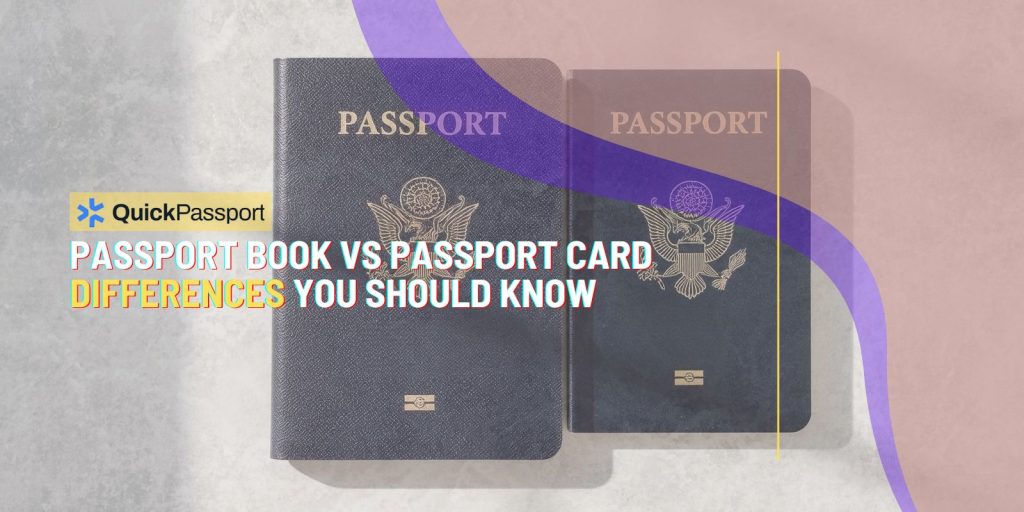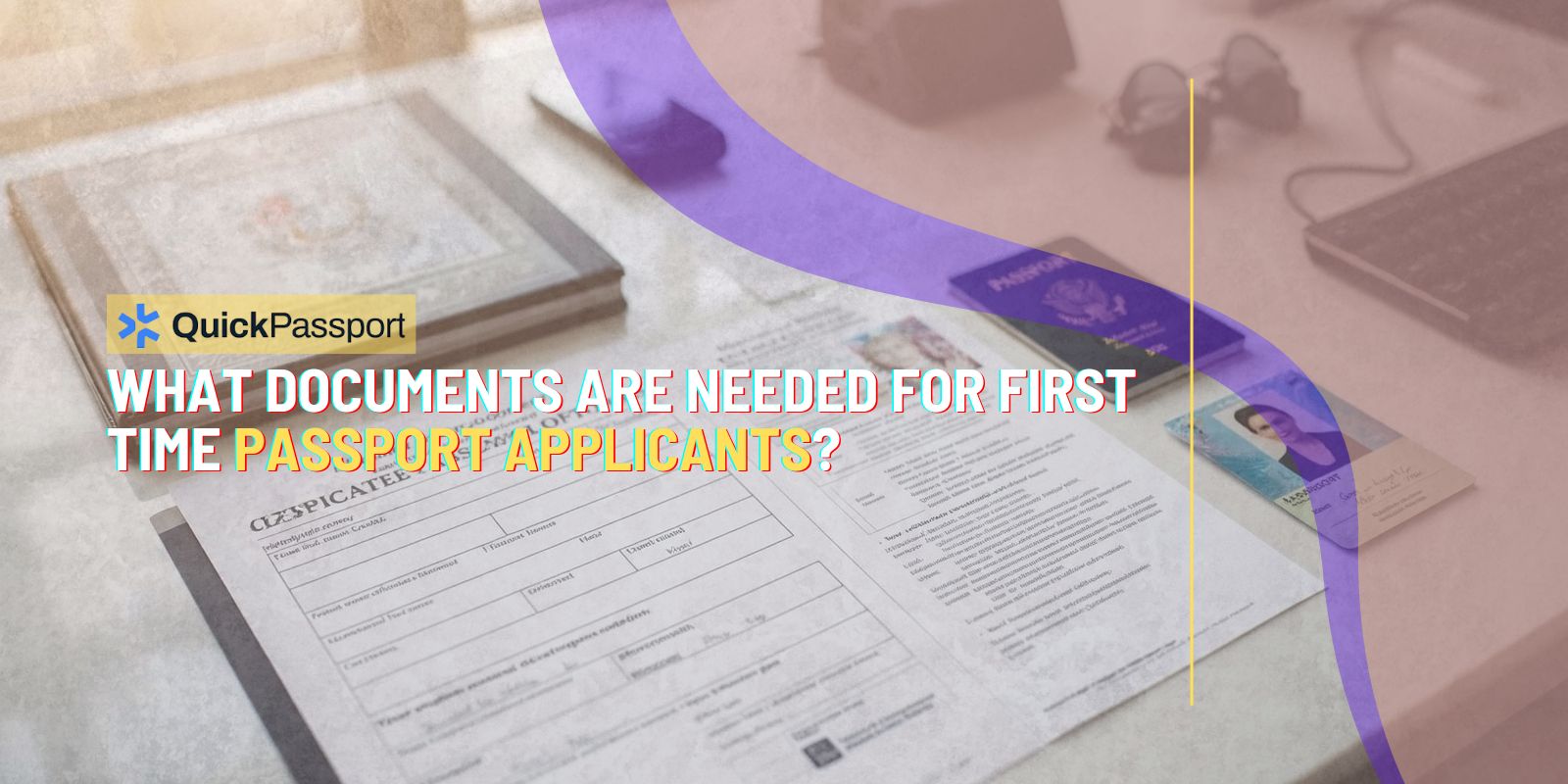When planning international travel or border crossings, one of the most important decisions you’ll face is choosing between a passport book and a passport card. Understanding the passport book vs passport card differences can save you time, money, and potential travel complications. Both documents serve as proof of U.S. citizenship and identity, but they have distinct limitations and advantages that make them suitable for different types of travelers and travel scenarios.
The choice between these two travel documents isn’t always straightforward. While both are issued by the U.S. State Department and provide official identification for international travel, their acceptance varies significantly depending on your destination and mode of transportation. Many travelers assume that one document can substitute for the other in all situations, but this misconception can lead to denied boarding or entry complications at international borders.
Cost considerations also play a crucial role in this decision. The passport card offers a more budget-friendly option for specific types of travel, while the passport book provides comprehensive global access but comes with a higher price tag. Understanding these financial implications, along with processing times and renewal requirements, helps travelers make informed decisions that align with their travel patterns and budget constraints.
The passport book advantages become particularly apparent for frequent international travelers who visit multiple countries or prefer the flexibility of air travel. However, for border-state residents who frequently cross into Canada or Mexico by land, the passport card might offer the perfect balance of convenience and affordability. Geographic location, travel frequency, and preferred transportation methods all influence which document better serves individual travel needs.
Security features, validity periods, and acceptance by various transportation providers further differentiate these documents. Modern travelers must also consider how these documents integrate with trusted traveler programs, automated border crossing systems, and international reciprocity agreements. Making the right choice requires understanding not just the immediate differences, but also how each document supports long-term travel goals and lifestyle preferences.
Key Takeaways
- Geographic Limitations: Passport cards are only valid for land and sea travel to Canada, Mexico, the Caribbean, and Bermuda, while passport books enable worldwide travel by any transportation method
- Cost Difference: Passport cards cost significantly less than passport books, making them an economical choice for limited regional travel needs
- Air Travel Restrictions: Passport cards cannot be used for international air travel, including flights to neighboring countries where land travel would be acceptable
- Processing Times: Both documents typically have similar processing timeframes, but expedited services are available for urgent travel needs
- Validity Periods: Adult passport books and cards both remain valid for 10 years, while minors receive documents valid for 5 years
- Size and Portability: Passport cards fit conveniently in wallets like driver’s licenses, while passport books require more storage space but contain additional pages for visa stamps
- Security Features: Both documents incorporate advanced security technologies, including RFID chips for automated border processing
- Renewal Requirements: Renewal processes differ slightly between the two documents, with specific eligibility criteria for mail-in renewals
Understanding Passport Document Types
The U.S. State Department issues two primary types of passport documents to meet different travel needs and preferences. The traditional passport book, which most people recognize as the standard travel document, consists of multiple pages bound in a distinctive dark blue cover. This booklet format accommodates entry and exit stamps from various countries, visa placements, and provides space for additional endorsements or amendments that may be required during international travel.

In contrast, the passport card represents a more recent innovation designed to streamline border crossings for specific types of travel. Introduced in 2008 as part of the Western Hemisphere Travel Initiative, this wallet-sized card addresses the needs of travelers who primarily cross borders by land or sea within the Western Hemisphere. The card format eliminates the bulk of a traditional passport while maintaining the essential identification and citizenship verification functions.
Both documents undergo the same rigorous application process and background verification procedures. Applicants must provide identical documentation proving citizenship and identity, regardless of which format they choose. The State Department applies the same security standards and verification protocols to both document types, ensuring that each provides reliable proof of U.S. citizenship and identity for authorized travel purposes.
The manufacturing and security features of both documents incorporate cutting-edge technology designed to prevent counterfeiting and facilitate automated processing. However, the physical constraints of each format influence how these security measures are implemented and how border control systems interact with the documents during processing.
Passport Book Advantages and Global Acceptance
The passport book advantages extend far beyond simple international recognition, encompassing comprehensive global mobility and unrestricted travel options. Every country that maintains diplomatic relations with the United States accepts the passport book as valid documentation for entry, making it the universal key to international travel. This broad acceptance eliminates the uncertainty and research required to determine whether alternative documents will be recognized at specific destinations.
Air travel represents perhaps the most significant advantage of passport books over cards. International aviation regulations and bilateral agreements between countries specifically require passport books for air travel, regardless of the destination. Even flights to Canada or Mexico, where passport cards are acceptable for land crossings, mandate passport books for air travel. This requirement stems from international aviation security protocols and the need for standardized documentation across global airline networks.
The physical design of passport books accommodates the complex requirements of international travel documentation. Multiple pages provide space for visa applications, entry stamps, exit stamps, and special endorsements that many countries require. Some nations mandate specific visa types that occupy entire pages, while others require evidence of previous travel history through stamp verification. The passport card’s limited space cannot accommodate these requirements, potentially restricting travel to countries with complex entry procedures.
Passport books also support extended international travel and multi-country itineraries more effectively. Travelers planning extended trips, study abroad programs, or business assignments often require multiple visas and frequent border crossings. The additional pages in passport books accommodate these complex travel patterns, while the card format simply cannot provide the necessary documentation space for extensive international movement.
Emergency consular services abroad often require passport books for certain procedures. U.S. embassies and consulates worldwide are equipped to work with passport books for emergency replacements, temporary travel documents, and consular services. While passport cards receive recognition for basic identification purposes, the full range of consular services typically requires the comprehensive documentation that passport books provide.
Passport Card Benefits and Regional Travel
The passport card excels in specific travel scenarios where its limitations don’t impact the travel experience, particularly for frequent border crossers in North America. Border state residents who regularly travel to Canada or Mexico for business, family visits, or recreational activities often find the card format more practical than carrying a full passport book. The wallet-sized design integrates seamlessly into daily carry items, reducing the risk of loss or damage that can occur with larger documents.

Cost effectiveness represents a major advantage of passport cards, especially for travelers who don’t require global travel capabilities. The significantly lower application and renewal fees make passport cards an attractive option for budget-conscious travelers whose international travel remains limited to neighboring countries. For families with multiple children, the cost savings can be substantial when only regional travel is planned.
Border crossing efficiency often improves with passport cards due to their RFID technology and compatibility with automated systems. Many land border crossings between the United States and its neighbors have implemented RFID readers that quickly process passport cards, reducing wait times and streamlining the inspection process. The standardized format also facilitates faster visual verification by border agents familiar with the card’s security features.
The durability of passport cards often exceeds that of passport books in daily use situations. The credit card-like construction resists wear and tear better than paper pages, while the compact size reduces the likelihood of accidental damage. For travelers who frequently cross borders and handle their documents regularly, this durability advantage can extend the practical lifespan of the travel document.
Cruise travel within the Western Hemisphere particularly benefits from passport card usage. Many cruise lines operating in the Caribbean, along the Mexican coast, or to Canadian ports accept passport cards for sea travel. The compact format is ideal for cruise travel where cabin space is limited and passengers prefer to minimize the valuables they carry while exploring ports of call.
Cost Analysis and Processing Considerations
Financial planning for passport applications requires understanding both the immediate costs and long-term value propositions of each document type. Passport book fees significantly exceed passport card costs, with the difference becoming more pronounced when considering family applications or frequent renewals. However, the cost analysis becomes more complex when factoring in the potential need for both documents or the limitations that might necessitate future upgrades.
First-time adult applicants face execution fees in addition to the basic document costs, and these fees apply regardless of which document type they choose. The execution fee covers the administrative costs of processing applications, verifying documentation, and conducting background checks. Understanding these combined costs helps applicants budget appropriately and avoid surprises during the application process.
Processing timeframes for both document types generally align, though seasonal variations and application volumes can affect actual delivery times. Standard processing typically takes 6-8 weeks for both passport books and cards, while expedited processing reduces this timeframe to 2-3 weeks for an additional fee. However, expedited processing availability and timeframes can vary based on current demand and operational capacity at processing facilities.
Geographic location influences processing costs and convenience through the availability of acceptance facilities and processing centers. Urban areas typically offer more acceptance facilities, reducing travel time and associated costs for application submission. Rural applicants might face additional travel expenses to reach acceptance facilities, potentially offsetting some of the cost savings associated with passport card applications.
Renewal cost considerations differ between the two document types, particularly regarding eligibility for mail-in renewals versus in-person applications. Passport books often qualify for mail-in renewals if they meet specific criteria, while passport cards have different renewal requirements that might necessitate in-person visits. These procedural differences can affect the total cost of ownership over the document’s lifetime, including time costs and travel expenses for renewal appointments.
Travel Scenarios and Document Selection
Choosing the appropriate passport document requires careful consideration of travel patterns, destinations, and transportation preferences. Business travelers who frequently visit international clients or attend global conferences typically benefit from passport book advantages, as their travel patterns often involve multiple countries, air transportation, and unpredictable itinerary changes. The flexibility and universal acceptance of passport books support dynamic business travel requirements without geographic or transportation limitations.

Family vacation planning presents unique considerations when selecting passport documents for multiple family members. Families planning Disney cruises to the Caribbean, Canadian camping trips, or Mexican beach vacations might find passport cards sufficient and cost-effective. However, families considering European vacations, Asian travel, or any international air travel must invest in passport books for all family members, making the cost difference more significant.
Retirement travel patterns often influence document selection, as retirees may have more time for extended international travel but also face fixed income constraints. Many retirees begin with passport cards for nearby destinations and later upgrade to passport books as their travel confidence and interests expand. Understanding the upgrade process and associated costs helps retirees plan their travel document strategy effectively.
Student travel presents another unique scenario, particularly for those participating in study abroad programs or international educational exchanges. Most educational programs require passport books due to visa requirements, extended stays, and the possibility of multi-country travel during study periods. Students should also consider the potential for post-graduation travel opportunities that might require global travel capabilities.
Emergency travel situations often favor passport books due to their universal acceptance and the availability of expedited processing services. Family emergencies, business crises, or unexpected opportunities frequently require rapid international travel to destinations that may not accept passport cards. The flexibility of passport books provides peace of mind for travelers who face unpredictable travel needs or family situations that might require urgent international travel.
Expert Guidance from QuickPassport – Phoenix
QuickPassport – Phoenix specializes in helping Arizona residents navigate the complexities of passport applications and document selection. Our experienced team understands the unique travel patterns of Southwest residents, including frequent border crossings to Mexico, business travel to global destinations, and family vacations throughout North America. We provide personalized consultations to help clients choose the most appropriate passport document based on their specific travel needs and budget considerations.
Our comprehensive services include document preparation assistance, application review, and expedited processing coordination when urgent travel needs arise. Many clients initially consider passport cards for cost savings but discover through our consultation process that their travel plans actually require passport book advantages. We help clients avoid the disappointment and additional costs associated with selecting inappropriate documentation for their travel goals.
Arizona’s proximity to Mexico makes passport card versus passport book decisions particularly relevant for our clients. We frequently advise families planning Cancun vacations, business professionals traveling to Mexican manufacturing facilities, and retirees considering extended stays in Mexican resort communities. Our local expertise helps clients understand how their specific travel patterns align with the capabilities and limitations of each document type.
Processing time management becomes crucial for Arizona travelers, especially during peak travel seasons when application volumes increase significantly. QuickPassport – Phoenix maintains current information about processing delays, expedited service availability, and alternative processing options that can help clients meet urgent travel deadlines. Our relationships with local acceptance facilities and processing centers enable us to provide accurate timeline estimates and processing guidance.
Frequently Asked Questions
Can I use a passport card for flights to Canada or Mexico?
No, passport cards cannot be used for any international air travel, including flights to Canada and Mexico. Even though these countries accept passport cards for land and sea border crossings, international aviation regulations require passport books for all air travel.
How much money can I save by choosing a passport card over a passport book?
Adult passport cards cost $65 compared to $130 for passport books, plus a $35 execution fee for first-time applicants of either document. The total savings for choosing a card over a book is $65 for adults and $50 for minors.
Can I upgrade from a passport card to a passport book later?
You cannot directly upgrade a passport card to a passport book. Instead, you must apply for a passport book as a new application, paying the full fees. However, you can use your valid passport card as proof of citizenship when applying for the passport book.
Do both documents have the same validity period?
Yes, both adult passport books and cards are valid for 10 years from the issue date. For applicants under 16, both documents are valid for 5 years.
Which document is better for cruise travel?
For closed-loop cruises (departing and returning to the same U.S. port) to the Caribbean, Canada, or Mexico, passport cards are acceptable and more convenient. For cruises involving air travel or destinations outside the Western Hemisphere, passport books are required.
Can I apply for both documents at the same time?
Yes, you can apply for both a passport book and card simultaneously using the same application. This option costs less than applying for each document separately and provides maximum travel flexibility.
Are the security features the same in both documents?
Both documents include advanced security features and RFID chips, but the implementation differs due to format constraints. Both provide equally secure proof of identity and citizenship, though the passport book includes additional anti-counterfeiting measures due to its multi-page format.
Which document is accepted for trusted traveler programs?
Both passport books and cards are acceptable for trusted traveler programs like Global Entry and NEXUS. However, the specific travel benefits of these programs may be limited by the geographic restrictions of passport cards.
Making Your Decision
The choice between a passport book and passport card ultimately depends on your individual travel patterns, budget constraints, and flexibility requirements. Understanding the passport book vs passport card differences empowers you to make an informed decision that supports your travel goals without unnecessary limitations or expenses. Consider not only your current travel plans but also potential future opportunities that might require different documentation capabilities.
For most travelers, the passport book advantages outweigh the additional cost, particularly given the 10-year validity period and the unpredictable nature of travel opportunities. The universal acceptance and flexibility of passport books provide peace of mind and eliminate the risk of being unable to take advantage of unexpected travel opportunities. However, for travelers with clearly defined regional travel patterns and no interest in global destinations, passport cards offer an economical and practical solution.
Remember that this decision affects your travel capabilities for the next decade, making it important to consider long-term goals and potential changes in your travel interests. Many travelers find that their wanderlust grows over time, making the initial investment in a passport book worthwhile even if their immediate travel plans seem limited. Consulting with passport professionals can help clarify the best choice for your specific situation and ensure that your travel documentation supports your adventures for years to come.






